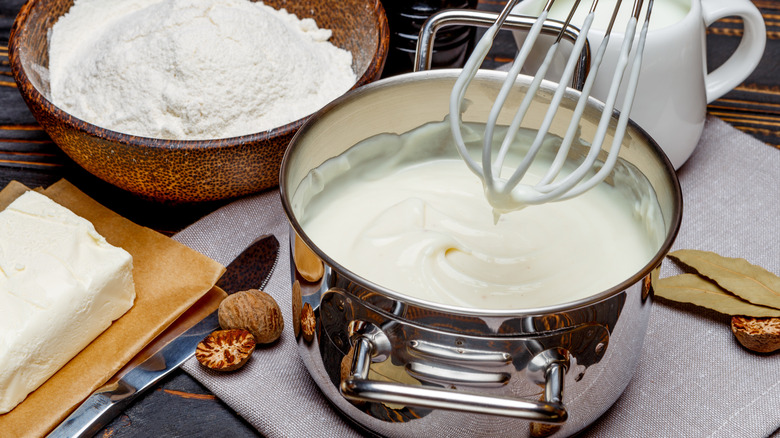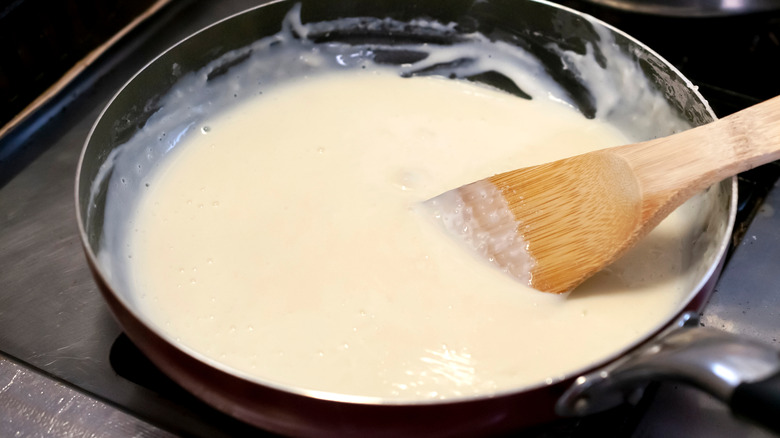What Is The Best Heat To Cook Milk When Making Béchamel Sauce?
If you are at all familiar with French culinary techniques, then you've probably heard of the five French mother sauces: béchamel, velouté, espagnole, hollandaise, and tomato. These mother sauces serve as the base for most traditional French sauces, and they're all use for different purposes, per Food52.
Of the five, béchamel is the simplest in its ingredients, and you might be most familiar with it when making recipes like potatoes au gratin, lasagna, or mac and cheese. For those unfamiliar, béchamel is made of three ingredients: flour, butter, and milk. It sounds simple, but there are a few elements to consider before heading into the kitchen. Even though it's a simple sauce, you can't just throw the ingredients into a pot and turn on the flame. There is a specific order you must use, and you should also use the correct temperatures for each ingredient. Read on to become a béchamel savant.
Your milk is best cooked on low heat
When making a proper béchamel sauce, the first step is always to make a roux, which is equal parts room temperature butter and flour cooked in a small pan over medium heat. While you might make a dark roux for recipes like gumbo, for a béchamel sauce, you need a blonde roux, per Simply Recipes.
Roux acts as a thickening agent that, when mixed with the milk, turns it into a thicker sauce. Some suggest that you don't want to mix cold milk into a hot roux. This will cause the milk to splatter all over the place and create extra cleanup time, so warm it up first by heating a saucepan of milk over a low flame at the same time you're making the roux (per The Kitchn). That way, when you combine them, it's a similar temperature, and they will blend together seamlessly. Use this trick the next time you're prepping mac and cheese, and you'll have less cleanup after you're done.

